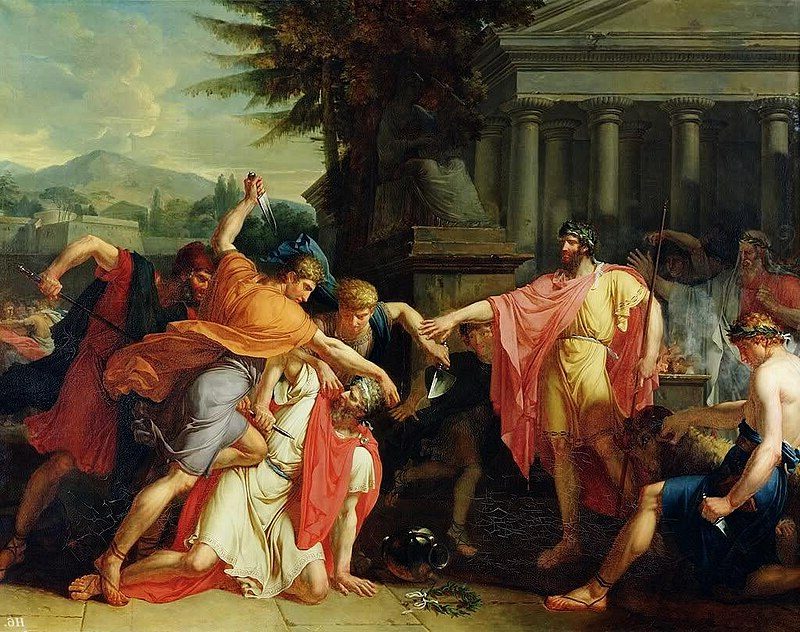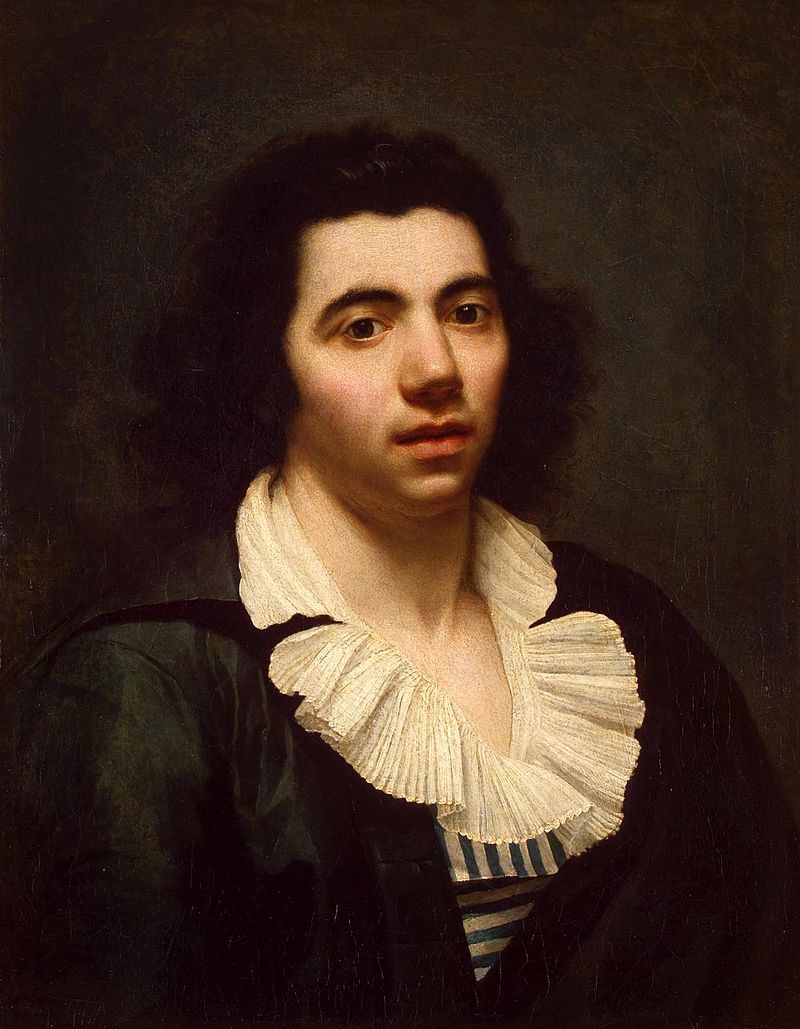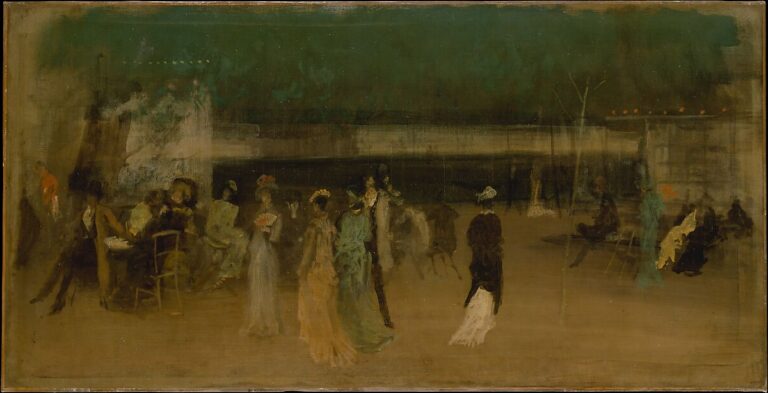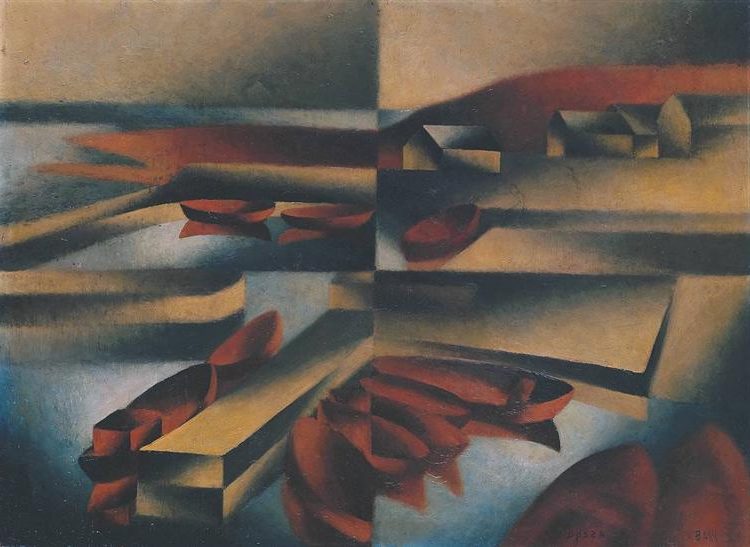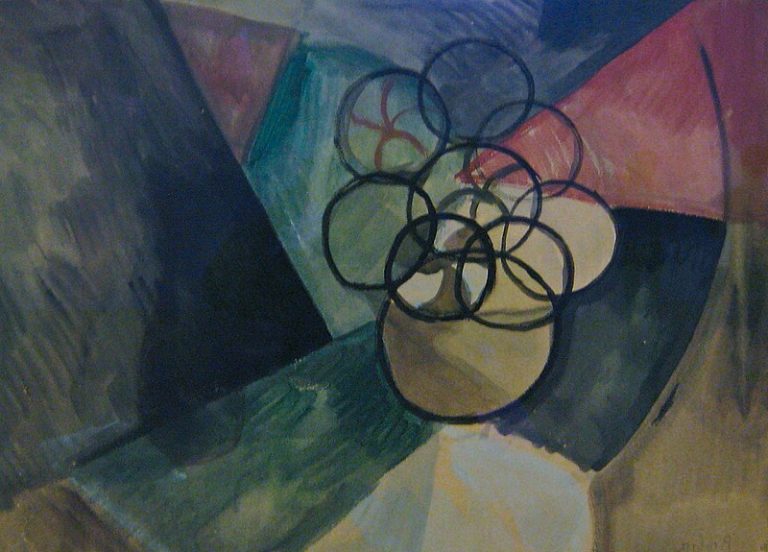Anne-Louis Girodet: Painter of Neoclassical and Romantic Masterpieces
Born: 29 January 1767, Orléanais, France
Death: 9 December 1824, Paris, France
Art Movement: Neoclassicism, Romanticism
Nationality: French
Teacher: Jacques-Louis David
Anne-Louis Girodet: Painter of Neoclassical and Romantic Masterpieces
Early Life and Artistic Training
Anne-Louis Girodet showed artistic talent from a young age. He began studying drawing as a child. Later, he trained under renowned masters in Paris.
Influence of Jacques-Louis David
Girodet joined Jacques-Louis David’s studio in Paris around 1783. David was a leading Neoclassical painter who shaped Girodet’s early style. Under David’s guidance, Girodet learned precise draftsmanship and classical composition.

The Revolt of Cairo, oil and Indian ink on paper, c. 1810 by Anne-Louis Girodet
David encouraged his students to study ancient art and literature. This classical education influenced Girodet’s later mythological paintings.
Girodet soon began exploring more emotional and dramatic themes, despite adopting some Neoclassical techniques.
Prix de Rome and Studies in Italy
In 1789, Girodet won the prestigious Prix de Rome. This prize allowed him to study art in Italy for several years.
In Rome, Girodet copied ancient sculptures and Renaissance masterpieces. He also traveled to Naples to sketch landscapes and ruins.
Italy exposed Girodet to new artistic styles beyond Neoclassicism. He became interested in dramatic lighting and expressive figures.
These Italian influences pushed Girodet’s art in a more Romantic direction. His later works combined classical forms with emotional intensity.
Major Works and Artistic Evolution
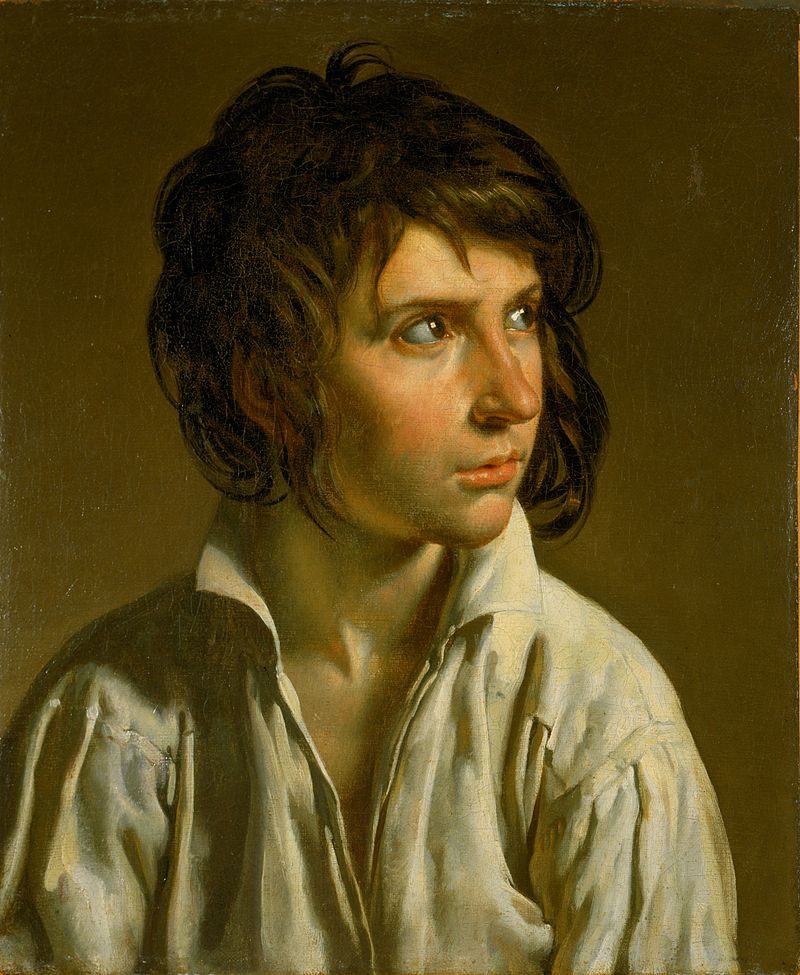

Anne-Louis Girodet’s art evolved from Neoclassical roots to early Romantic styles. His works featured literary themes and emotional depth, marking a shift in French painting during the late 18th and early 19th centuries.
Transition from Neoclassical to Early Romantic Movement
Girodet began his career as a student of Jacques-Louis David, the leading Neoclassical painter. His early works showed clear Neoclassical influences in their precise style and mythological subjects.
Over time, Girodet moved away from strict Neoclassicism. He began to include more emotional and dramatic elements in his paintings. This shift marked his transition towards early Romanticism.
The “Sleep of Endymion” (1791) is a key work that shows this change. It combines Neoclassical technique with a dreamlike, sensual mood that hints at Romantic themes.
Notable Paintings and Commissions
Girodet created several important works throughout his career. “Ossian Receiving the Ghosts of French Heroes” (1802) was a major commission for Napoleon’s palace.
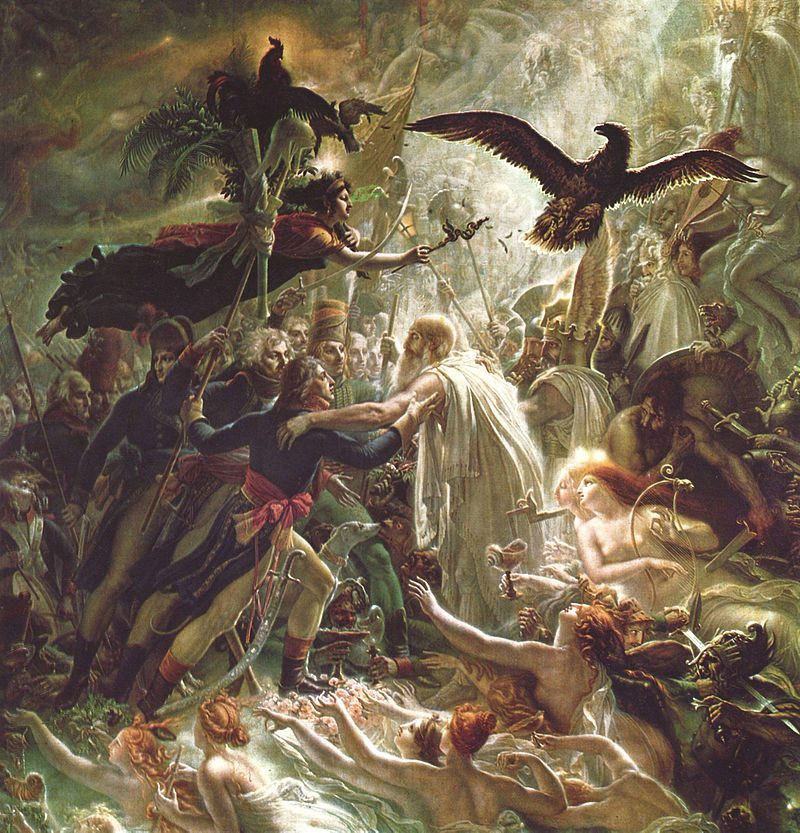
Ossian receiving the Ghosts of the French Heroes, c. 1801 by Anne-Louis Girodet
“The Burial of Atala” (1808) became one of his most famous paintings. It was based on Chateaubriand’s novel and showed Girodet’s skill in capturing literary scenes.
Other notable works include:
- “Joseph Recognized by His Brothers” (1789)
- “Galatée” (1813)
- “La Révolte du Caire” (1810)
These paintings show Girodet’s range from Biblical scenes to contemporary events.
Literary Inspirations in Art
Girodet often turned to literature for inspiration. He was drawn to both classical and contemporary writing.
His painting “Ossian Receiving the Ghosts of French Heroes” was based on James Macpherson’s Ossian poems. This work blended mythology with current political themes.
Chateaubriand’s writings were another major influence. “The Burial of Atala” and “The Spirits of French Warriors” both came from Chateaubriand’s works.
Girodet’s use of literary sources added depth to his art. It allowed him to explore complex emotions and ideas in his paintings.
Legacy and Influence
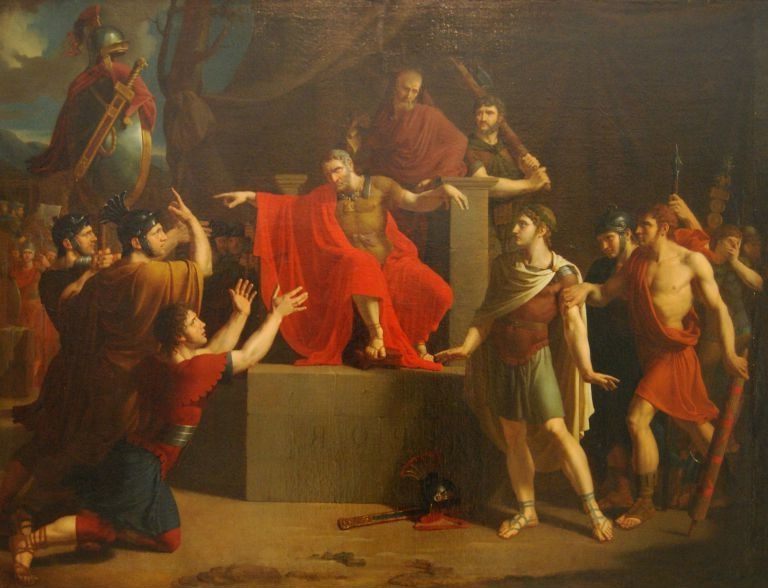
Brutus condemns his sons to death (Brutus condamne ses fils à mort), 1785
Anne-Louis Girodet left a lasting mark on French art. His work bridged Neoclassicism and Romanticism, inspiring future artists and earning him recognition during his lifetime and beyond.
Academic and Public Recognition
Girodet achieved great success in his career. He won the Prix de Rome in 1789, a prestigious award for young artists. The Louvre and other major museums now display his paintings. His work “The Sleep of Endymion” gained fame for its dreamy quality. Girodet received the Legion of Honour, France’s highest award. He also won the Decennial Prize for his painting “Scène de Déluge” in 1810.
The Musée Girodet in Montargis, France is dedicated to his art. This museum helps keep Girodet’s legacy alive today.
Influence on French Art and Romantic Movement
Girodet played a key role in shaping early French Romanticism. His paintings mixed classical themes with emotional depth and atmospheric effects. This style influenced younger artists moving away from strict Neoclassicism.

The Oath of the Horatii (Le Serment des Horaces, 1786 by Anne-Louis Girodet
Girodet’s use of light and color in works like “Endymion Sleeping” set new trends. He painted portraits of Napoleon’s family, helping define the era’s official style. His literary interests and poetic approach to painting inspired other Romantic artists.
Girodet’s blend of eroticism and classical subjects pushed boundaries in French art. This daring approach paved the way for later Romantic painters to explore new themes and techniques.
Frequently Asked Questions
Anne-Louis Girodet was an important French painter who bridged Neoclassicism and Romanticism. His unique style and notable works left a lasting impact on the art world.
What are some of the notable works of Anne-Louis Girodet?
Girodet created several famous paintings during his career. These include “The Sleep of Endymion” and “Burial of Atala.” He also painted portraits of Napoleon and other important figures of his time.
His work “Ossian Receiving the Ghosts of French Heroes” gained him wide recognition. This painting showed his skill in blending classical themes with romantic elements.
In which art movements is Anne-Louis Girodet often categorized?
Girodet is often placed in both the Neoclassical and Romantic movements. He started his career as a student of the Neoclassical painter Jacques-Louis David.
As his style evolved, Girodet began to include more romantic and emotional elements in his work. This shift put him at the forefront of the early Romantic movement in French painting.
Can you describe the unique characteristics of Anne-Louis Girodet’s painting style?
Girodet’s style mixed classical forms with dramatic lighting and emotional themes. He often used strong contrasts of light and shadow to create mood in his paintings.
His figures were painted with great skill and detail. Girodet added elements of eroticism to some of his works, which was unusual for the time.
How did Anne-Louis Girodet influence the art world during his lifetime?
Girodet was highly praised during his career. His blend of classical technique and romantic themes helped pave the way for the Romantic movement in art.
He won awards and gained many important commissions. Girodet’s work inspired other artists to explore new ways of expressing emotion and drama in painting.
What was the relationship between Anne-Louis Girodet and his mentor, Jacques-Louis David?
Girodet joined David’s studio as a young artist. He quickly became one of David’s most talented students.
While Girodet respected David’s teachings, he began to move away from strict Neoclassicism. This shift created some tension in their relationship as Girodet developed his own unique style.
How has Anne-Louis Girodet’s work been received by art historians and critics in the modern era?
For many years after his death, Girodet’s work was not widely studied. In recent decades, there has been renewed interest in his paintings.
Art historians now view Girodet as an important link between Neoclassicism and Romanticism. His technical skill and innovative style have earned him recognition as a significant figure in French art history.


